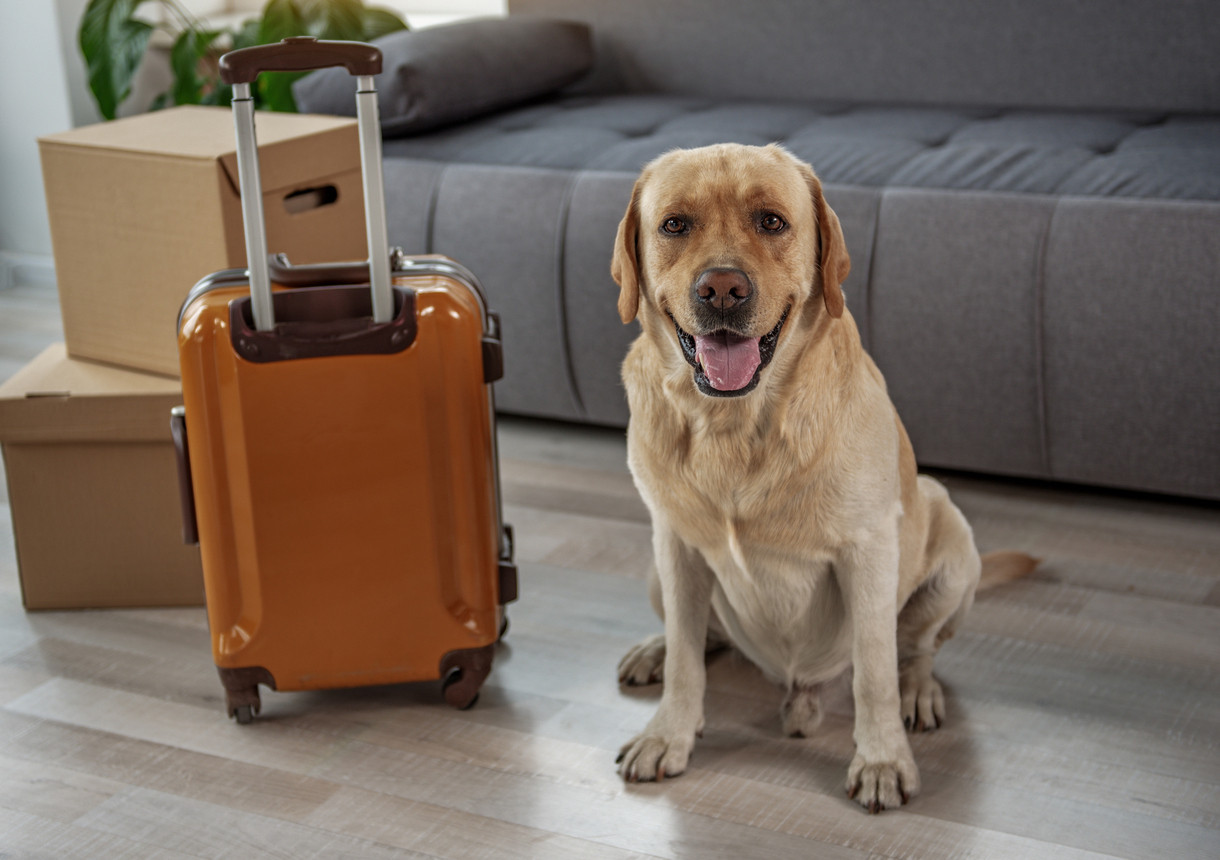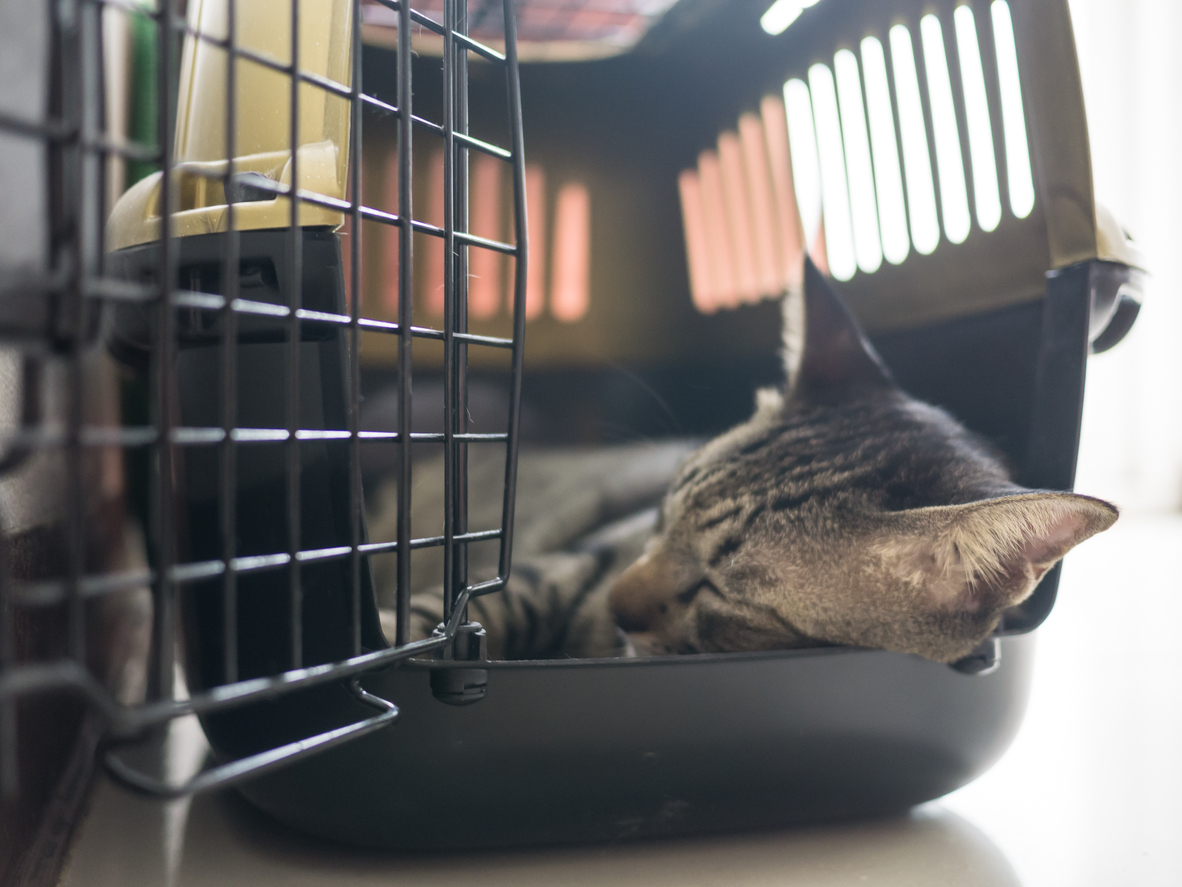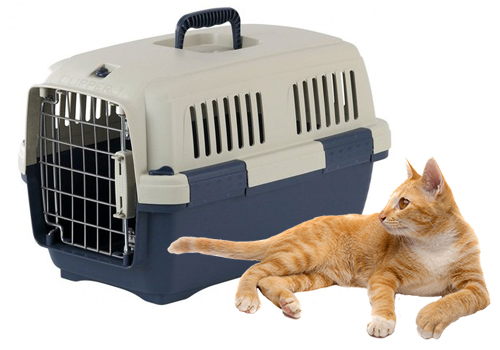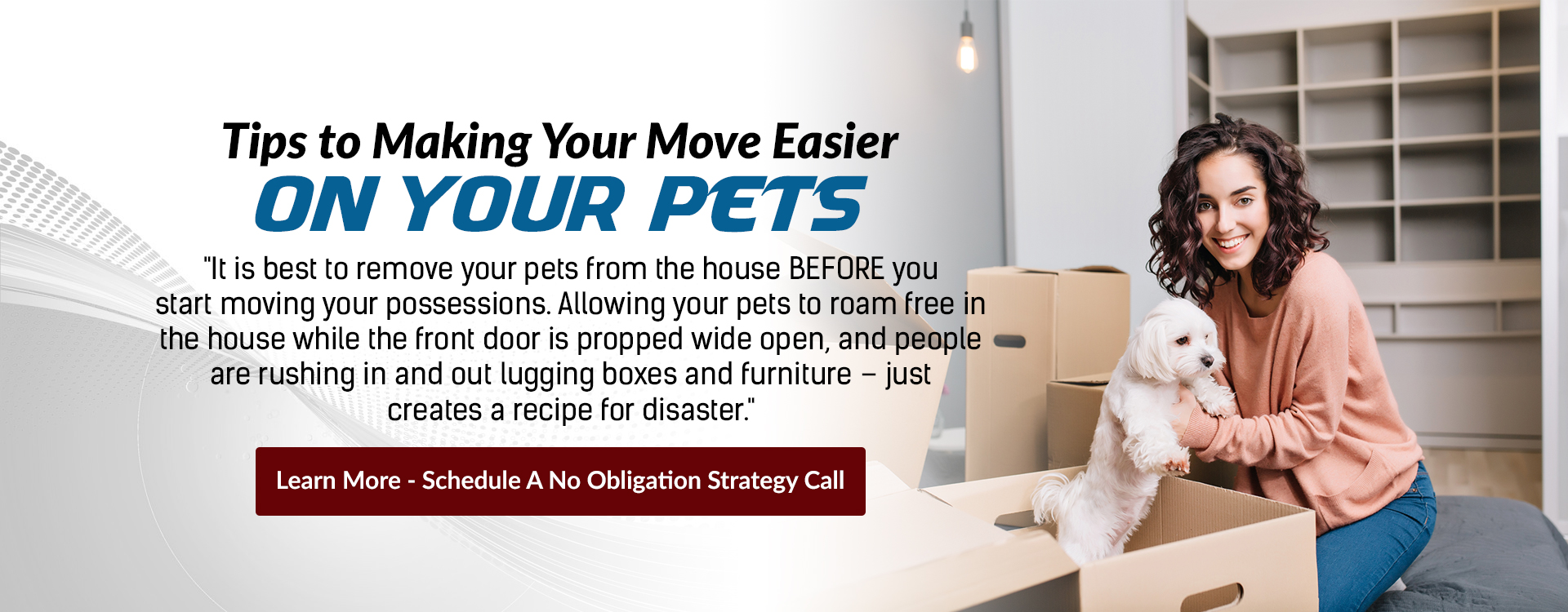
PET OWNERS:
Tips to Make Your Move Easier on Your Pets


TIPS: During The Packing Process




TIPS: Moving Day

It is best to remove your pets from the house BEFORE you start moving your possessions. Allowing your pets to roam free in the house while the front door is propped wide open, and people are rushing in and out lugging boxes and furniture – just creates a recipe for disaster.

If it is not possible to remove your pets beforehand, then you should select an empty room with a door to safely house them for the day. Place their food and water dishes, toys, bedding and litter box in the room with them. Many pets find the background noise of a radio comforting, and it helps to muffle some of the loud and unsettling noises that come from moving heavy furniture and boxes.

Be sure to put collars with identification tags on your dogs and cats, as many pets do escape during the confusion of moving day. To avoid possible injury to your cat, always use a breakaway collar. Although many pets today are micro-chipped, having your pet wear a collar remains a good idea, as only pet care industry workers have access to the tool that reads the chip, while anyone can read your name and phone number on a tag.

For transportation to the new home, cats should be placed in a cat carrier on the floor of the back seat, and dogs should be properly restrained. Dogs should either ride in the back of the vehicle, separated from passengers by a dog grate, or should sit in the back seat, strapped into a dog seat belt. This protects both your dog, and the passengers in the vehicle – a quick stop can send your dog hurtling forward, seriously injuring her, and those in her path.

Never leave your pet unattended in a vehicle. While the temperature in the car may seem just a little warm to you, animals overheat very quickly. Sadly, every year there are thousands of pets who succumb to heatstroke as a direct result of being left in a hot car.

Bring your pet’s dishes, food, leash, toys, bedding, litter box, and any medications in the car with you and your pet. Providing consistency for your pet is important, so when you arrive at your new home, set up your pet’s things in those spots where you intend on keeping them.
TIPS: Introducing Your Pet to
their New Home

Before releasing your pet into his new backyard, take a quick safety check. Is the fence in good shape – no spaces for your pet to wiggle through, or under? Can your pet reach the neighbor’s pet through the fence, and if so, is he/she friendly? Are there any sharp objects that could pose a hazard to your pet? What about plants – are there any that could be harmful to your pet if she decided to devour them? Is there any garbage lying around for your pet to get into? Is there shade available for your pet? After running through all of these checks, be sure to leave a large, cool, bowl of water for your pet, and spend some time just sitting in the backyard with him.

It is recommended that cats remain indoors. One study reported that cats who are allowed to roam free outside have an average life span of only 3 years, while indoor cats can be expected to live for an average of 13 years. If your cat has been allowed to roam in the past, now is the ideal time to break him of this habit. If you keep your cat indoors from day one in the new house, he will not have had time to establish his own turf outside – and will view the indoors as his sole territory.

Again, select a room with a door for your cat to use as her "transition room". Place an extra litter box, food and water dishes, toys, and bedding inside with your cat. After a couple of days, when most of the boxes have been unpacked, the furniture placed, and things have generally calmed down – open the door and allow your cat to venture out. Before moving her belongings to where you want to keep them, allow your cat the use of the room for another 2 or 3 days while she becomes more confident in her new surroundings.
TIPS: Small Pets




For more information on how to make moving easier on your pets, or if your pet has a pre-existing medical condition that requires special care, please contact your veterinarian for advice.
Your Referrals Help Save Children from Cancer


If you have questions, please contact us:
Typically replies within 24hrs
Contact Us









